Animal Health Department
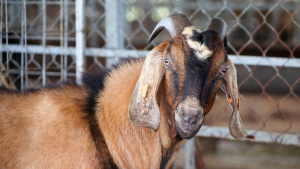


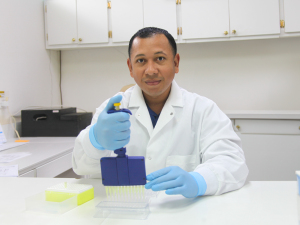
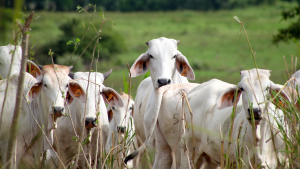
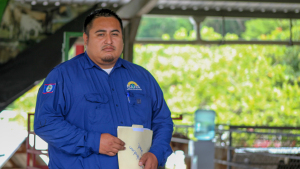

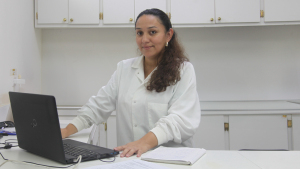
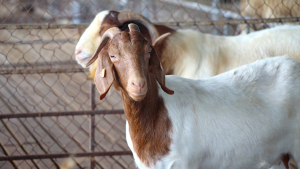
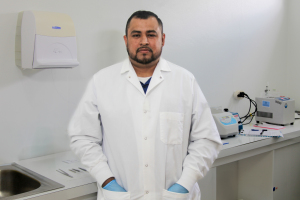
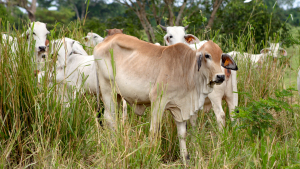
Overview
The Animal Health Department is subdivided into terrestrial animal health (cattle, sheep, pigs, poultry) and aquatic animal health (fish, shrimp, other crustaceans). Our team of trained, skilled professionals work across various productive industries to ensure herd health, marketability, and quality of life.
Animal health education campaigns, early detection of diseases through surveillance, and laboratory diagnostics are some of the methods used to protect our national herds. This is our contribution to ensuring the growth of all productive animal industries, improving food security, and the improvement of livelihoods. Contact us for more information.
Animal Health Priorities
Import permits are issued with sanitary conditions gathered through risk assessments and based on the evaluation of scientific information. These permits regulate imports with the intention of preventing the introduction of new quarantine pests and diseases.
BAHA’s Animal Health Department ensures that our animals remains healthy so as to promote food security, food production and trade in livestock and their products. The department is dependent upon other departments within BAHA to optimize the achievements of its goals and activities.
Disease surveillance carried out by BAHA’s Animal Health Department is for the prompt detection of emergence or re-emergence of known and/or unknown pathogens that cause disease to livestock, small stock, poultry and aquatic animals that are of economic importance. Early detection of and response to emergent events is crucial for diseases to be controlled quickly, and effective surveillance is the cornerstone of this. The Animal Health Department carries out two types of disease surveillance: Active Surveillance and Passive Surveillance.
Active surveillance is the intensive monitoring of new and emerging diseases in a country or region. The establishment of surveillance and control programs requires a substantial and long-term commitment of resources that are limited in nature. This contrasts with the unquantifiable number of possible zoonotic and non-zoonotic infectious diseases that may or can emerge. In Belize, BAHA continuously carries out active surveillance for diseases such as Avian Influenza and Newcastle Disease in poultry; Classical Swine Fever and African Swine Fever in swine, and Brucellosis in cattle. These diseases are of primary concern due to their economic implications.
Active surveillance of aquatic animal health entails the collection & analysis of samples and data interpretation of generated information on the health status of shrimp populations, following target specific diseases or pathogens (WOAH Listed Diseases for Crustaceans). Aquaculture facilities including hatcheries, and production ponds/tanks are monitored for surveillance purposes. Active Surveillance activities are performed to achieve one or more of the following objectives:
- Demonstrate the absence of infection to facilitate international trade in live aquatic animals and them products.
- Provide an early warning system for timely detection and identification of the incursion or emergence of a disease in a country or part of a country previously declared or considered to be free of that disease.
- Identify occurrence of disease or infection and epidemiological situations requiring notification and reporting to the WOAH as specified in the Aquatic Code.
- Determine the occurrence or trends of an endemic disease including changes to its incidence or prevalence (or its contributing factors)
WOAH shrimp listed diseases under monitoring is as follows:
- White Spot Syndrome Virus (WSSV),
- Infectious Hypodermal and Hematopoietic Necrosis Virus (IHHNV),
- Taura Syndrome Virus (TSV),
- Yellow Head Virus-1 (YHV)
- Infectious Myonecrosis Virus (IMNV)
- Infection with Hepatobacter penaei – Necrotising Hepatopancreatitis (NHPB)
- Acute Hepatopancreatic Necrosis Disease (AHPND) / Early Mortality Syndrome (EMS) as it is commonly known.
Passive surveillance is a monitoring tool that is based on the communication between stakeholders (farmers, NGOs, and other government ministries). It is dependent on the reporting of clinical signs that are associated with notifiable diseases. These diseases may present a risk to public health or food security therefore, it is important to engage a One Health Approach in other to maximize in resources and coverage.
The Belize Agricultural Health Authority (BAHA) conducts passive surveillance on diseases affecting different species. Examples are: Rabies, Bovine Spongiform Encephalopathy (BSE), Avian Influenza (AI), Newcastle Disease (NDV), African Swine Fever (ASF), Classical Swine Fever (CSF), Venezuelan Equine Encephalitis (VEE), Brucellosis (BR), and others.
BAHA has the responsibility to notify the World Organization for Animal Health (WOAH) as to the occurrence of notifiable diseases. The Competent Authority, BAHA, continuously engages in sensitization campaigns in order to encourage stakeholders to report suspected cases since continuous reporting and rapid response are key determinants in controlling the spread of diseases.
When reports are made to the Authority or alerts as to suspected disease are received, selective sampling of targeted aquatic animals is carried out. Samples from confiscated contraband aquatic animals are collected by BAHA staff and tested to determine the risk of diseases entering the country through this method. Passive surveillance in aquatic animals is carried out for disease detection purposes and/or diagnostic confirmation.
Shrimp and Tilapia diseases of importance are:
- White Spot Syndrome Virus (WSSV),
- Infectious Hypodermal and Hematopoietic Necrosis Virus (IHHNV),
- Taura Syndrome Virus (TSV),
- Yellow Head Virus-1 (YHV)
- Infectious Myonecrosis Virus (IMNV)
- Infection with Hepatobacter penaei – Necrotising Hepatopancreatitis (NHPB)
- Acute Hepatopancreatic Necrosis Disease (AHPND) / Early Mortality Syndrome (EMS) as it is commonly known.
- Enterocytozoon Hepatopenaei (EHP)
- Penaeus vannamei Nodavirus (PvNV)
- Tilapia Lake Virus (TiLV)
The Belize Agricultural Health Authority (Veterinary Drugs and Animal Feed) (Registration and Control) SI No. 184 of 2001 Chapter 211 of the Substantive Laws of Belize establishes the Veterinary Drug Control Unit (Unit) of BAHA’s Animal Health Department. The Unit is headed by the Veterinary Drugs, Veterinary Pesticides, and Animal Feed Registrar who is designated in writing by BAHA’s Managing Director. The Registrar is also the chairperson of the Veterinary Drug Control Committee (VDCC) which is comprised of officers of the Authority and veterinary stakeholders. The VDCC is established to advise the Unit in performing its functions and discharging its duties.
The Unit has the legal mandate to register Veterinary Drugs, Veterinary Pesticides, Animal Feed, Biological, and Biotechnological products of veterinary use. It also covers the manufacture, importation, distribution and sale of those products mentioned above and other related ones. The Unit works closely with the Ministry of Health and Wellness (MOHW) whose legal mandate includes all antibiotics and controlled substances. The MOHW, though not legally included in the composition of the VDCC participates as an honorary member in the VDCC meetings.
The Unit provides conditions of registration and respective application forms to facilitate all the processes that are relevant to its functions. It also presents a fee structure. There are plans to review and update the Veterinary Drug SI and to harmonize with regional legislation.
Officially inaugurated in July 2015, this laboratory was established as the first lab offering PCR diagnosis of Animal Health diseases in Belize. It was funded by the Government of Belize, International Development Bank (IDB), and the International Atomic Energy Agency (IAEA).
“The PCR Laboratory is equipped with the latest technology, quality controls in the processes, continuous improvement programs & training, and qualified staff committed to provide quality service in a timely manner.”
The PCR Laboratory accredited eight (8) methods under ISO/IEC 17025:2017 Standards and actively participates in Inter-Regional Laboratory Proficiency Tests with University of Arizona’s Aquaculture Pathology Lab (WOAH’s official reference laboratory for shrimp diseases). This laboratory has successfully participated and was approved with perfect score (100%) the last five (5) consecutive years in the detection of shrimp diseases listed by the World Organisation for Animal Health (WOAH), demonstrating technical competence of laboratory staff and accuracy of diagnosis of shrimp diseases.
The Central Veterinary Diagnostic Laboratory (CVDL) offers a wide range of tests for various animal species in various disciplines such as Hematology, Parasitology, Serology, Bacteriology, and Molecular Diagnosis. CVDL focuses on trans boundary animal diseases in which BAHA collaborates with private partners such as the Belize Livestock Producers Association (BLPA), the Belize Poultry Association (BPA) and regional and international organizations such as OIRSA, USDA, IICA. Surveillance programs that include laboratory testing, are in place for Avian Influenza, Newcastle Disease, Salmonellosis, African Swine Fever (ASF), Classical Swine fever (CSF), Equine Encephalitis, Bovine Spongiform Encephalomyelitis (BSE), and Rabies.
CVDL also offers serologic tests for other avian diseases to evaluate the immune status of commercial long-life birds. The CVDL aides in the facilitation of exportation of live cattle by testing for Brucellosis.
To provide specialized testing and/or for confirmation of animal diseases, samples are referred to international laboratories such as:
- Ministerio de Desarrollo Agropecuario (MIDA), Panama.
- National Veterinary Services Laboratories (NVSL), IOWA, USA.
- Ministerio Agropecuario y Forestal (MAGFOR), Nicaragua
African Swine Fever
Avian Influenza
Blackleg
Brucellosis
Classical Swine Fever
Mareks Disease
Rabies
Tuberculosis
Venezuelan Equine Encephalomyelitis (VEE)
Animal Health Application Forms
Procedures For The Importation Of Livestock
Dogs and Cats Import Conditions
Day Old Chicks and Hatching Eggs Import Conditions
Swine For Breeding Import Conditions
Sheep Import Conditions
Bovine Semen Import Conditions
Cattle For Breeding Import Conditions
Laboratories
A crucial component of disease diagnostics is testing carried out by the laboratory. The laboratory either rules out or confirms diagnosis. At the Animal Health Department of the Belize Agricultural Health Authority, the Central Veterinary Diagnostic Laboratory processes samples taken from terrestrial animals and the PCR Laboratory processes samples from aquatic animals. Both laboratory units are a Biosafety Level 2 and offer top-notch services to its clients.
Central Veterinary Diagnostic Laboratory

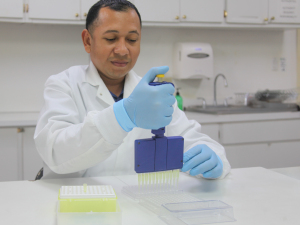
The Central Veterinary Diagnostic Laboratory (CVDL) offers a wide range of tests for various animal species in various disciplines such as Hematology, Parasitology, Serology, Bacteriology, and Molecular Diagnosis. CVDL focuses on transboundary animal diseases in which BAHA collaborates with private partners such as the Belize Livestock Producers Association (BLPA), the Belize Poultry Association (BPA) and regional and international organizations such as OIRSA, USDA, IICA. Surveillance programs that include laboratory testing, are in place for Avian Influenza, Newcastle Disease, Salmonellosis, African Swine Fever (ASF), Classical Swine fever (CSF), Equine Encephalitis, Bovine Spongiform Encephalomyelitis (BSE), and Rabies.
CVDL also offers serologic tests for other avian diseases to evaluate the immune status of commercial long-life birds. The CVDL aides in the facilitation of exportation of live cattle by testing for Brucellosis.
To provide specialized testing and/or for confirmation of animal diseases, samples are referred to international laboratories such as:
1. Ministerio de Desarrollo Agropecuario (MIDA), Panama.
2. National Veterinary Services Laboratories (NVSL), IOWA, USA.
3. Ministerio Agropecuario y Forestal (MAGFOR), Nicaragua


PCR Laboratory

Officially inaugurated in July 2015, this laboratory was established as the first lab offering PCR diagnosis of Animal Health diseases in Belize. It was funded by the Government of Belize, International Development Bank (IDB), and the International Atomic Energy Agency (IAEA).
“The PCR Laboratory is equipped with the latest technology, quality controls in the processes, continuous improvement programs & training, and qualified staff committed to provide quality service in a timely manner.”
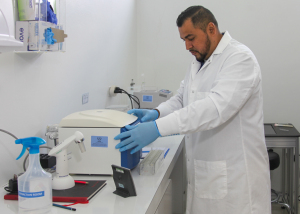
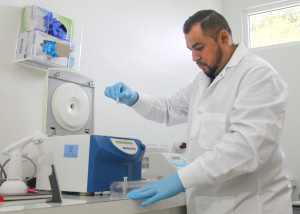
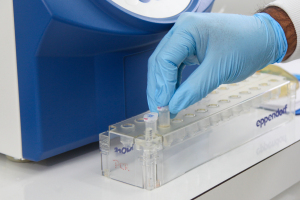
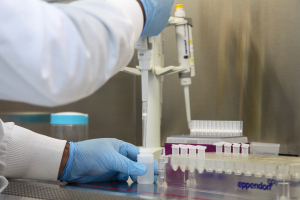
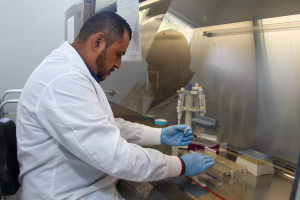
The PCR Laboratory accredited eight (8) methods under ISO/IEC 17025:2017 Standards and actively participates in Inter-Regional Laboratory Proficiency Tests with University of Arizona’s Aquaculture Pathology Lab (WOAH’s official reference laboratory for shrimp diseases). This laboratory has successfully participated and was approved with perfect score (100%) the last five (5) consecutive years in the detection of shrimp diseases listed by the World Organisation for Animal Health (WOAH), demonstrating technical competence of laboratory staff and accuracy of diagnosis of shrimp diseases.
Disease Surveillance
The World Organisation for Animal Health Terrestrial Code 2022 defines Surveillance as “the systematic ongoing collection, collation, and analysis of information related to animal health and the timely dissemination of information so that action can be taken”.
The objective of disease surveillance carried out by the Animal Health Department of the Belize Agricultural Health Authority is for the prompt detection of emergence or re-emergence of known and/or unknown pathogens that cause disease to livestock, small stock, poultry and aquatic animals that are of economic importance. Early detection of and response to emergent events is crucial for diseases to be controlled quickly, and effective surveillance is the cornerstone of this.
BAHA’s Animal Health Department carries out two types of surveillance: Active Surveillance and Passive Surveillance.
Active Surveillance

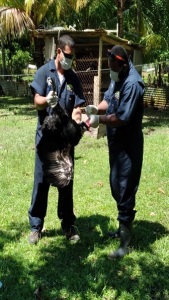
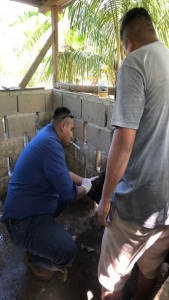
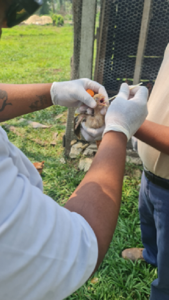
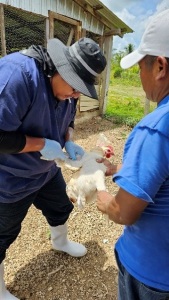
TERRESTRIAL ANIMALS:
Active surveillance is defined as the active monitoring of new and emerging diseases in a country or region. The establishment of surveillance and control programs requires a substantial and long-term commitment of resources that are limited in nature. This contrasts with the unquantifiable number of possible zoonotic and non-zoonotic infectious diseases that may or can emerge.
In Belize, BAHA continuously carries out active surveillance for diseases such as Avian Influenza and Newcastle Disease in poultry; Classical Swine Fever and African Swine Fever in swine, and Brucellosis in cattle. These diseases are of primary concern due to their economic implications.
AQUATIC ANIMALS:
Active surveillance of aquatic animal health entails the collection & analysis of samples and data interpretation of generated information on the health status of shrimp populations, following target specific diseases or pathogens (WOAH Listed Diseases for Crustaceans). Aquaculture facilities including hatcheries, and production ponds/tanks are monitored for surveillance purposes.
Active Surveillance activities are performed to achieve one or more of the following objectives:
- Demonstrate the absence of infection to facilitate international trade in live aquatic animals and them products.
- Provide an early warning system for timely detection and identification of the incursion or emergence of a disease in a country or part of a country previously declared or considered to be free of that disease.
- Identify occurrence of disease or infection and epidemiological situations requiring notification and reporting to the WOAH as specified in the Aquatic Code
- Determine the occurrence or trends of an endemic disease including changes to its incidence or prevalence (or its contributing factors)
WOAH shrimp listed diseases under monitoring:
- White Spot Syndrome Virus (WSSV),
- Infectious Hypodermal and Hematopoietic Necrosis Virus (IHHNV),
- Taura Syndrome Virus (TSV),
- Yellow Head Virus-1 (YHV)
- Infectious Myonecrosis Virus (IMNV)
- Infection with Hepatobacter penaei – Necrotising Hepatopancreatitis (NHPB)
- Acute Hepatopancreatic Necrosis Disease (AHPND) / Early Mortality Syndrome (EMS) as it is commonly known.
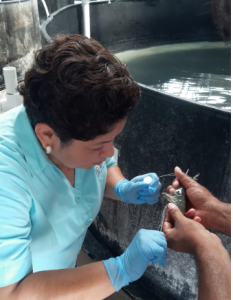
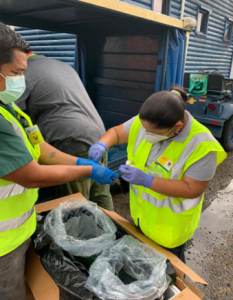
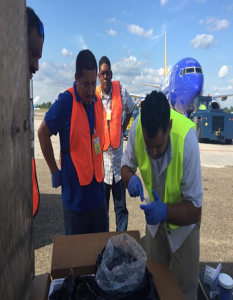
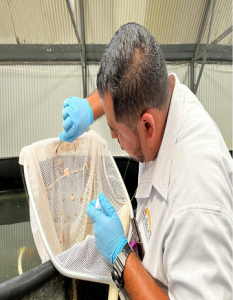
Passive Surveillance
Terrestrial Animals
Passive surveillance is a monitoring tool that is based on the communication between stakeholders (farmers, NGOs, and other government ministries). It is dependent on the reporting of clinical signs that are associated with notifiable diseases. These diseases may present a risk to public health or food security therefore, it is important to engage a One Health Approach in other to maximize in resources and coverage.
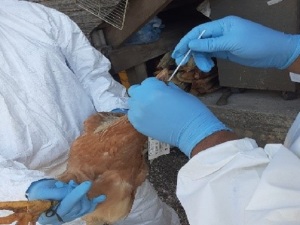


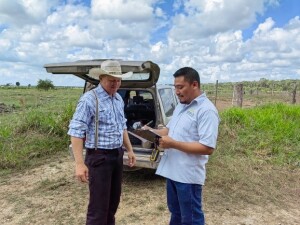
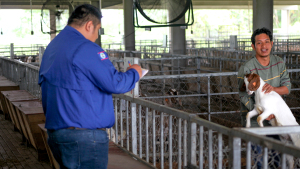

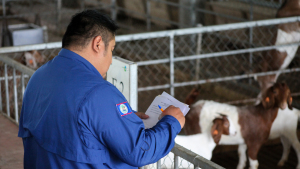


The PCR Laboratory accredited eight (8) methods under ISO/IEC 17025:2017 Standards and actively participates in Inter-Regional Laboratory Proficiency Tests with University of Arizona’s Aquaculture Pathology Lab (WOAH’s official reference laboratory for shrimp diseases). This laboratory has successfully participated and was approved with perfect score (100%) the last five (5) consecutive years in the detection of shrimp diseases listed by the World Organisation for Animal Health (WOAH), demonstrating technical competence of laboratory staff and accuracy of diagnosis of shrimp diseases.
Traceability
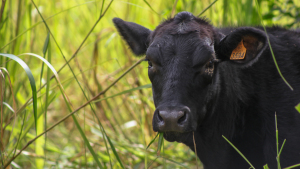
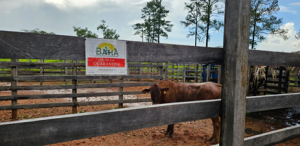
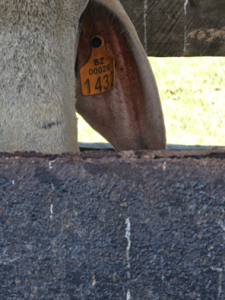
Traceability is defined as “a complete system of identification and registration of animals whereby follow-up can be provided throughout the production chain providing the necessary data for commercialization and use of meat, milk, and derivatives of animals”, SI No. 77 of 2011: Belize Agricultural Health Authority (Animal Identification) Regulations, 2011.
In essence, this is the capability to follow a product from its point of origin, through a process, to its endpoint. Traceability of individual products and traceability of the process(es) the product undergoes are key factors to ensuring that health, sanitation, and food safety are always present during production.
The Belize Livestock Registry (BLR), established under Regulation 8 of SI No. 77 of 2011, is applicable to bovines and entails the registration of establishments, identification of bovines, movement control of animals, and database recording.
The Belize Agricultural Health Authority oversees the execution of the Belize Livestock Registry by the Belize Livestock Producers Association.
Partners in traceability include the Ministry of Agriculture, Food Safety, and Enterprise (MAFSE) and the Organismo Internacional Regional de Sanidad Agropecuaria (OIRSA).
African Swine Fever
Avian Influenza
Blackleg
Brucellosis
Classical Swine Fever
Mareks Disease
Rabies
Tuberculosis
Venezuelan Equine Encephalomyelitis (VEE)
How can the Animal Health Department help you?
Use the contact form bellow to contact us or check our FAQ to help assist you in your queries.
Kindly email your query to animalhealth@baha.org.bz or give us a call at +501-824-4872.
All wild animals (snakes, pet birds, turtles, ferrets, etc.) require a CITES permit from the Forest Department before applying for a BAHA Import Permit.
Send us an email at u003ca href=u0022mailto:animalhealth@baha.org.bzu0022u003eanimalhealth@baha.org.bzu003c/au003e informing us what species of animal you would like to import and for what purpose. We will then send you information regarding what is required.
An Import Risk Analysis is the process that determines the level of risk associated with the importation of a particular commodity from one or more specific regions.
Animal medications that have been registered in Belize are allowed.
Overview
Animal Health Department
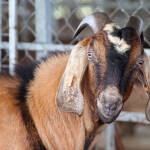



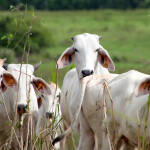

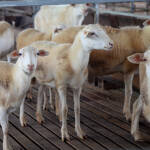

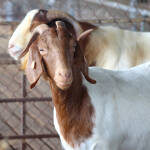

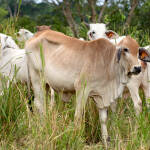
Overview
The Animal Health Department is subdivided into terrestrial animal health (cattle, sheep, pigs, poultry) and aquatic animal health (fish, shrimp, other crustaceans). Our team of trained, skilled professionals work across various productive industries to ensure herd health, marketability, and quality of life.
Animal health education campaigns, early detection of diseases through surveillance, and laboratory diagnostics are some of the methods used to protect our national herds. This is our contribution to ensuring the growth of all productive animal industries, improving food security, and the improvement of livelihoods. Contact us for more information.
What We Do/Who We Are
Animal Health Priorities
Import permits are issued with sanitary conditions gathered through risk assessments and based on the evaluation of scientific information. These permits regulate imports with the intention of preventing the introduction of new quarantine pests and diseases.
BAHA’s Animal Health Department ensures that our animals remains healthy so as to promote food security, food production and trade in livestock and their products. The department is dependent upon other departments within BAHA to optimize the achievements of its goals and activities.
Disease surveillance carried out by BAHA’s Animal Health Department is for the prompt detection of emergence or re-emergence of known and/or unknown pathogens that cause disease to livestock, small stock, poultry and aquatic animals that are of economic importance. Early detection of and response to emergent events is crucial for diseases to be controlled quickly, and effective surveillance is the cornerstone of this. The Animal Health Department carries out two types of disease surveillance: Active Surveillance and Passive Surveillance.
Active surveillance is the intensive monitoring of new and emerging diseases in a country or region. The establishment of surveillance and control programs requires a substantial and long-term commitment of resources that are limited in nature. This contrasts with the unquantifiable number of possible zoonotic and non-zoonotic infectious diseases that may or can emerge. In Belize, BAHA continuously carries out active surveillance for diseases such as Avian Influenza and Newcastle Disease in poultry; Classical Swine Fever and African Swine Fever in swine, and Brucellosis in cattle. These diseases are of primary concern due to their economic implications.
Active surveillance of aquatic animal health entails the collection & analysis of samples and data interpretation of generated information on the health status of shrimp populations, following target specific diseases or pathogens (WOAH Listed Diseases for Crustaceans). Aquaculture facilities including hatcheries, and production ponds/tanks are monitored for surveillance purposes. Active Surveillance activities are performed to achieve one or more of the following objectives:
- Demonstrate the absence of infection to facilitate international trade in live aquatic animals and them products.
- Provide an early warning system for timely detection and identification of the incursion or emergence of a disease in a country or part of a country previously declared or considered to be free of that disease.
- Identify occurrence of disease or infection and epidemiological situations requiring notification and reporting to the WOAH as specified in the Aquatic Code.
- Determine the occurrence or trends of an endemic disease including changes to its incidence or prevalence (or its contributing factors)
WOAH shrimp listed diseases under monitoring is as follows:
- White Spot Syndrome Virus (WSSV),
- Infectious Hypodermal and Hematopoietic Necrosis Virus (IHHNV),
- Taura Syndrome Virus (TSV),
- Yellow Head Virus-1 (YHV)
- Infectious Myonecrosis Virus (IMNV)
- Infection with Hepatobacter penaei – Necrotising Hepatopancreatitis (NHPB)
- Acute Hepatopancreatic Necrosis Disease (AHPND) / Early Mortality Syndrome (EMS) as it is commonly known.
Passive surveillance is a monitoring tool that is based on the communication between stakeholders (farmers, NGOs, and other government ministries). It is dependent on the reporting of clinical signs that are associated with notifiable diseases. These diseases may present a risk to public health or food security therefore, it is important to engage a One Health Approach in other to maximize in resources and coverage.
The Belize Agricultural Health Authority (BAHA) conducts passive surveillance on diseases affecting different species. Examples are: Rabies, Bovine Spongiform Encephalopathy (BSE), Avian Influenza (AI), Newcastle Disease (NDV), African Swine Fever (ASF), Classical Swine Fever (CSF), Venezuelan Equine Encephalitis (VEE), Brucellosis (BR), and others.
BAHA has the responsibility to notify the World Organization for Animal Health (WOAH) as to the occurrence of notifiable diseases. The Competent Authority, BAHA, continuously engages in sensitization campaigns in order to encourage stakeholders to report suspected cases since continuous reporting and rapid response are key determinants in controlling the spread of diseases.
When reports are made to the Authority or alerts as to suspected disease are received, selective sampling of targeted aquatic animals is carried out. Samples from confiscated contraband aquatic animals are collected by BAHA staff and tested to determine the risk of diseases entering the country through this method. Passive surveillance in aquatic animals is carried out for disease detection purposes and/or diagnostic confirmation.
Shrimp and Tilapia diseases of importance are:
- White Spot Syndrome Virus (WSSV),
- Infectious Hypodermal and Hematopoietic Necrosis Virus (IHHNV),
- Taura Syndrome Virus (TSV),
- Yellow Head Virus-1 (YHV)
- Infectious Myonecrosis Virus (IMNV)
- Infection with Hepatobacter penaei – Necrotising Hepatopancreatitis (NHPB)
- Acute Hepatopancreatic Necrosis Disease (AHPND) / Early Mortality Syndrome (EMS) as it is commonly known.
- Enterocytozoon Hepatopenaei (EHP)
- Penaeus vannamei Nodavirus (PvNV)
- Tilapia Lake Virus (TiLV)
The Belize Agricultural Health Authority (Veterinary Drugs and Animal Feed) (Registration and Control) SI No. 184 of 2001 Chapter 211 of the Substantive Laws of Belize establishes the Veterinary Drug Control Unit (Unit) of BAHA’s Animal Health Department. The Unit is headed by the Veterinary Drugs, Veterinary Pesticides, and Animal Feed Registrar who is designated in writing by BAHA’s Managing Director. The Registrar is also the chairperson of the Veterinary Drug Control Committee (VDCC) which is comprised of officers of the Authority and veterinary stakeholders. The VDCC is established to advise the Unit in performing its functions and discharging its duties.
The Unit has the legal mandate to register Veterinary Drugs, Veterinary Pesticides, Animal Feed, Biological, and Biotechnological products of veterinary use. It also covers the manufacture, importation, distribution and sale of those products mentioned above and other related ones. The Unit works closely with the Ministry of Health and Wellness (MOHW) whose legal mandate includes all antibiotics and controlled substances. The MOHW, though not legally included in the composition of the VDCC participates as an honorary member in the VDCC meetings.
The Unit provides conditions of registration and respective application forms to facilitate all the processes that are relevant to its functions. It also presents a fee structure. There are plans to review and update the Veterinary Drug SI and to harmonize with regional legislation.
Officially inaugurated in July 2015, this laboratory was established as the first lab offering PCR diagnosis of Animal Health diseases in Belize. It was funded by the Government of Belize, International Development Bank (IDB), and the International Atomic Energy Agency (IAEA).
“The PCR Laboratory is equipped with the latest technology, quality controls in the processes, continuous improvement programs & training, and qualified staff committed to provide quality service in a timely manner.”
The PCR Laboratory accredited eight (8) methods under ISO/IEC 17025:2017 Standards and actively participates in Inter-Regional Laboratory Proficiency Tests with University of Arizona’s Aquaculture Pathology Lab (WOAH’s official reference laboratory for shrimp diseases). This laboratory has successfully participated and was approved with perfect score (100%) the last five (5) consecutive years in the detection of shrimp diseases listed by the World Organisation for Animal Health (WOAH), demonstrating technical competence of laboratory staff and accuracy of diagnosis of shrimp diseases.
The Central Veterinary Diagnostic Laboratory (CVDL) offers a wide range of tests for various animal species in various disciplines such as Hematology, Parasitology, Serology, Bacteriology, and Molecular Diagnosis. CVDL focuses on trans boundary animal diseases in which BAHA collaborates with private partners such as the Belize Livestock Producers Association (BLPA), the Belize Poultry Association (BPA) and regional and international organizations such as OIRSA, USDA, IICA. Surveillance programs that include laboratory testing, are in place for Avian Influenza, Newcastle Disease, Salmonellosis, African Swine Fever (ASF), Classical Swine fever (CSF), Equine Encephalitis, Bovine Spongiform Encephalomyelitis (BSE), and Rabies.
CVDL also offers serologic tests for other avian diseases to evaluate the immune status of commercial long-life birds. The CVDL aides in the facilitation of exportation of live cattle by testing for Brucellosis.
To provide specialized testing and/or for confirmation of animal diseases, samples are referred to international laboratories such as:
- Ministerio de Desarrollo Agropecuario (MIDA), Panama.
- National Veterinary Services Laboratories (NVSL), IOWA, USA.
- Ministerio Agropecuario y Forestal (MAGFOR), Nicaragua
Animal Disease Information
African Swine Fever
Avian Influenza
Blackleg
Brucellosis
Classical Swine Fever
Mareks Disease
Rabies
Tuberculosis
Venezuelan Equine Encephalomyelitis (VEE)
Application Forms
Animal Health Application Forms
Import Procedures
Procedures For The Importation Of Livestock
Import Conditions
Dogs and Cats Import Conditions
Day Old Chicks and Hatching Eggs Import Conditions
Swine For Breeding Import Conditions
Sheep Import Conditions
Bovine Semen Import Conditions
Cattle For Breeding Import Conditions
Laboratory Information
Laboratories
A crucial component of disease diagnostics is testing carried out by the laboratory. The laboratory either rules out or confirms diagnosis. At the Animal Health Department of the Belize Agricultural Health Authority, the Central Veterinary Diagnostic Laboratory processes samples taken from terrestrial animals and the PCR Laboratory processes samples from aquatic animals. Both laboratory units are a Biosafety Level 2 and offer top-notch services to its clients.
Central Veterinary Diagnostic Laboratory


The Central Veterinary Diagnostic Laboratory (CVDL) offers a wide range of tests for various animal species in various disciplines such as Hematology, Parasitology, Serology, Bacteriology, and Molecular Diagnosis. CVDL focuses on transboundary animal diseases in which BAHA collaborates with private partners such as the Belize Livestock Producers Association (BLPA), the Belize Poultry Association (BPA) and regional and international organizations such as OIRSA, USDA, IICA. Surveillance programs that include laboratory testing, are in place for Avian Influenza, Newcastle Disease, Salmonellosis, African Swine Fever (ASF), Classical Swine fever (CSF), Equine Encephalitis, Bovine Spongiform Encephalomyelitis (BSE), and Rabies.
CVDL also offers serologic tests for other avian diseases to evaluate the immune status of commercial long-life birds. The CVDL aides in the facilitation of exportation of live cattle by testing for Brucellosis.
To provide specialized testing and/or for confirmation of animal diseases, samples are referred to international laboratories such as:
1. Ministerio de Desarrollo Agropecuario (MIDA), Panama.
2. National Veterinary Services Laboratories (NVSL), IOWA, USA.
3. Ministerio Agropecuario y Forestal (MAGFOR), Nicaragua


PCR Laboratory

Officially inaugurated in July 2015, this laboratory was established as the first lab offering PCR diagnosis of Animal Health diseases in Belize. It was funded by the Government of Belize, International Development Bank (IDB), and the International Atomic Energy Agency (IAEA).
“The PCR Laboratory is equipped with the latest technology, quality controls in the processes, continuous improvement programs & training, and qualified staff committed to provide quality service in a timely manner.”
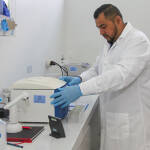



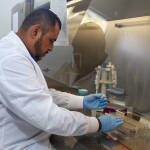
The PCR Laboratory accredited eight (8) methods under ISO/IEC 17025:2017 Standards and actively participates in Inter-Regional Laboratory Proficiency Tests with University of Arizona’s Aquaculture Pathology Lab (WOAH’s official reference laboratory for shrimp diseases). This laboratory has successfully participated and was approved with perfect score (100%) the last five (5) consecutive years in the detection of shrimp diseases listed by the World Organisation for Animal Health (WOAH), demonstrating technical competence of laboratory staff and accuracy of diagnosis of shrimp diseases.
Surveillance
Disease Surveillance
The World Organisation for Animal Health Terrestrial Code 2022 defines Surveillance as “the systematic ongoing collection, collation, and analysis of information related to animal health and the timely dissemination of information so that action can be taken”.
The objective of disease surveillance carried out by the Animal Health Department of the Belize Agricultural Health Authority is for the prompt detection of emergence or re-emergence of known and/or unknown pathogens that cause disease to livestock, small stock, poultry and aquatic animals that are of economic importance. Early detection of and response to emergent events is crucial for diseases to be controlled quickly, and effective surveillance is the cornerstone of this.
BAHA’s Animal Health Department carries out two types of surveillance: Active Surveillance and Passive Surveillance.
Active Surveillance

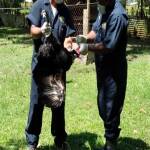
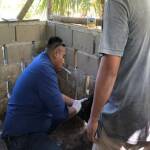
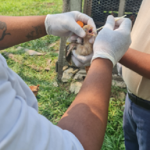
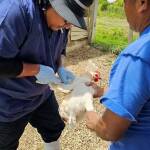
TERRESTRIAL ANIMALS:
Active surveillance is defined as the active monitoring of new and emerging diseases in a country or region. The establishment of surveillance and control programs requires a substantial and long-term commitment of resources that are limited in nature. This contrasts with the unquantifiable number of possible zoonotic and non-zoonotic infectious diseases that may or can emerge.
In Belize, BAHA continuously carries out active surveillance for diseases such as Avian Influenza and Newcastle Disease in poultry; Classical Swine Fever and African Swine Fever in swine, and Brucellosis in cattle. These diseases are of primary concern due to their economic implications.
AQUATIC ANIMALS:
Active surveillance of aquatic animal health entails the collection & analysis of samples and data interpretation of generated information on the health status of shrimp populations, following target specific diseases or pathogens (WOAH Listed Diseases for Crustaceans). Aquaculture facilities including hatcheries, and production ponds/tanks are monitored for surveillance purposes.
Active Surveillance activities are performed to achieve one or more of the following objectives:
- Demonstrate the absence of infection to facilitate international trade in live aquatic animals and them products.
- Provide an early warning system for timely detection and identification of the incursion or emergence of a disease in a country or part of a country previously declared or considered to be free of that disease.
- Identify occurrence of disease or infection and epidemiological situations requiring notification and reporting to the WOAH as specified in the Aquatic Code
- Determine the occurrence or trends of an endemic disease including changes to its incidence or prevalence (or its contributing factors)
WOAH shrimp listed diseases under monitoring:
- White Spot Syndrome Virus (WSSV),
- Infectious Hypodermal and Hematopoietic Necrosis Virus (IHHNV),
- Taura Syndrome Virus (TSV),
- Yellow Head Virus-1 (YHV)
- Infectious Myonecrosis Virus (IMNV)
- Infection with Hepatobacter penaei – Necrotising Hepatopancreatitis (NHPB)
- Acute Hepatopancreatic Necrosis Disease (AHPND) / Early Mortality Syndrome (EMS) as it is commonly known.




Passive Surveillance
Terrestrial Animals
Passive surveillance is a monitoring tool that is based on the communication between stakeholders (farmers, NGOs, and other government ministries). It is dependent on the reporting of clinical signs that are associated with notifiable diseases. These diseases may present a risk to public health or food security therefore, it is important to engage a One Health Approach in other to maximize in resources and coverage.









The PCR Laboratory accredited eight (8) methods under ISO/IEC 17025:2017 Standards and actively participates in Inter-Regional Laboratory Proficiency Tests with University of Arizona’s Aquaculture Pathology Lab (WOAH’s official reference laboratory for shrimp diseases). This laboratory has successfully participated and was approved with perfect score (100%) the last five (5) consecutive years in the detection of shrimp diseases listed by the World Organisation for Animal Health (WOAH), demonstrating technical competence of laboratory staff and accuracy of diagnosis of shrimp diseases.
Traceability
Traceability


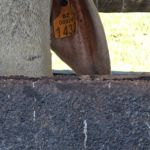
Traceability is defined as “a complete system of identification and registration of animals whereby follow-up can be provided throughout the production chain providing the necessary data for commercialization and use of meat, milk, and derivatives of animals”, SI No. 77 of 2011: Belize Agricultural Health Authority (Animal Identification) Regulations, 2011.
In essence, this is the capability to follow a product from its point of origin, through a process, to its endpoint. Traceability of individual products and traceability of the process(es) the product undergoes are key factors to ensuring that health, sanitation, and food safety are always present during production.
The Belize Livestock Registry (BLR), established under Regulation 8 of SI No. 77 of 2011, is applicable to bovines and entails the registration of establishments, identification of bovines, movement control of animals, and database recording.
The Belize Agricultural Health Authority oversees the execution of the Belize Livestock Registry by the Belize Livestock Producers Association.
Partners in traceability include the Ministry of Agriculture, Food Safety, and Enterprise (MAFSE) and the Organismo Internacional Regional de Sanidad Agropecuaria (OIRSA).
Publication and Manuals
African Swine Fever
Avian Influenza
Blackleg
Brucellosis
Classical Swine Fever
Mareks Disease
Rabies
Tuberculosis
Venezuelan Equine Encephalomyelitis (VEE)
News
Contact Us
How can the Animal Health Department help you?
Kindly email your query to animalhealth@baha.org.bz or give us a call at +501-824-4872.
All wild animals (snakes, pet birds, turtles, ferrets, etc.) require a CITES permit from the Forest Department before applying for a BAHA Import Permit.
Send us an email at u003ca href=u0022mailto:animalhealth@baha.org.bzu0022u003eanimalhealth@baha.org.bzu003c/au003e informing us what species of animal you would like to import and for what purpose. We will then send you information regarding what is required.
An Import Risk Analysis is the process that determines the level of risk associated with the importation of a particular commodity from one or more specific regions.
Animal medications that have been registered in Belize are allowed.
